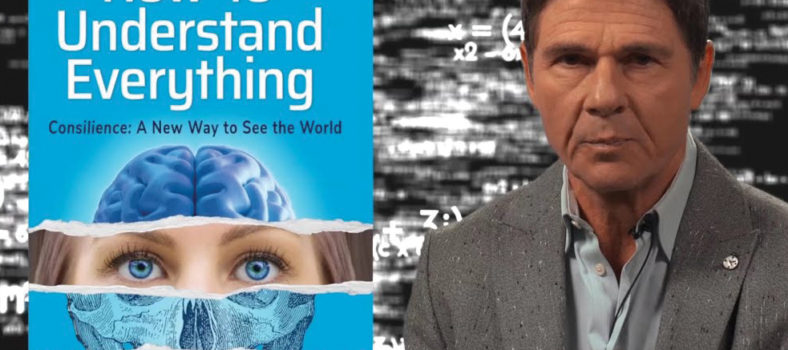An Interview with Shawn Stewart, Senior Vice President, Customer and Triangle, Canadian Tire Corporation
 By Stephen Shaw
By Stephen Shaw
Traditional retailers learned a harsh lesson over this past year. Slow to make the transition to omnichannel commerce, they had misread the slow gradual rise in yearly online spending as a sign of shopper disinterest. Until the pandemic hit.
The abrupt surge in online shopping left many retailers scrambling to respond. As foot traffic dropped off sharply due to restrictions on in-person shopping, they were forced to close stores. Unable to make up the difference in eCommerce sales, many retailers were pushed to the brink of insolvency.
This financial carnage may have been the tipping point for the reinvention of retail. The industry has finally woken up to the fact that shopping habits have radically changed. And as product manufacturers open up their own digital storefronts, the era of retail hegemony may finally be over. Retailers will need to evolve beyond their historical role as the primary distribution channel of merchandise.
In Canada one retailer has stood out above all others in transforming its business model — the century-old Canadian Tire. In the past the company has fended off incursions by U.S. giants like Walmart and Target eager to muscle in on its turf. The company’s resiliency is partly explained by its geographical footprint — most Canadians live within a 15-minute drive of a store — but also by its dealer network which gives the company a strong tie to each local community. In 2019 Canadian Tire was recognized as Canada’s most admired brand in Leger’s annual consumer survey. It rightfully owns the honorific “Canada’s Store”, a far cry from the days when it was mocked as “Crappy Tire”.
This past year, despite all of the havoc caused by the pandemic, Canadian Tire increased comparable year-over-year store sales by 11 percent across its banners. Ecommerce sales more than doubled, an impressive feat considering the company actually backed away from online selling at one point, until it came to its senses seven years ago and began to invest heavily in its digital and eCommerce capabilities.
A big part of the company’s recent success is attributable to its embrace of digital-first marketing, thanks to its 10-million-member Triangle Rewards program. Launched in 2018, Triangle Rewards is the digital version of the famously popular Canadian Tire Money, once looked upon affectionately as Canada’s second national currency. The Canadian Tire Corporation (CTC) Executive in charge of loyalty and insights is Shawn Stewart who took over the role six years ago. Amongst his many accomplishments has been the stewardship of the Triangle program and the creation of an AI-driven recommendation engine which powers seven million weekly personalized offers.
Stephen Shaw: Your CTC stores did amazingly well this past year in spite of the pandemic. What explains the lift in sales?
 Shawn Stewart: Customers came to us as a one-stop shop. The thing with the Canadian Tire brand is you can always find things you never knew you needed. But we’ve really developed our presence in the essentials as well. The strength of our dealers really helped because they were very easily able to launch curbside pickup and new capabilities that we didn’t have before COVID. And, in talking to customers throughout the pandemic, what we heard, loud and clear, was the strength of our brand, the love for our brand, and the appreciation for all the safety measures we were taking. Our e-commerce site was overloaded with volume, but we quickly got that right. And we actually acquired new customers, especially young adults, who joined the Triangle program for the first time during this period. We really focused from a merchandising standpoint on what we call “boredom busters.” So, people with kids, spending a lot of time in their backyards, buying barbecues, patios, toys. All those core categories were right in our sweet spot. And the number of bikes we sold was just out of this world.
Shawn Stewart: Customers came to us as a one-stop shop. The thing with the Canadian Tire brand is you can always find things you never knew you needed. But we’ve really developed our presence in the essentials as well. The strength of our dealers really helped because they were very easily able to launch curbside pickup and new capabilities that we didn’t have before COVID. And, in talking to customers throughout the pandemic, what we heard, loud and clear, was the strength of our brand, the love for our brand, and the appreciation for all the safety measures we were taking. Our e-commerce site was overloaded with volume, but we quickly got that right. And we actually acquired new customers, especially young adults, who joined the Triangle program for the first time during this period. We really focused from a merchandising standpoint on what we call “boredom busters.” So, people with kids, spending a lot of time in their backyards, buying barbecues, patios, toys. All those core categories were right in our sweet spot. And the number of bikes we sold was just out of this world.
Shaw: Were there merchandise categories that declined in sales?
Stewart: The automotive business. People were staying at home and not driving as much. Although on the flipside, we have a segment that we call the “Auto Enthusiast” and they loaded up because they had time on their hands. They were tinkering around with their vehicles. So, a lot of DIY categories in that segment were up.
Shaw: Were there supply chain issues? Take bikes, for example. Did you suddenly find yourself having a tough time restocking?
Stewart: In that specific case, our SportChek business was closed, so we had a bunch of available bike inventory. And we’ve always had great relationships with our vendor base, so that put us in a good position to be the number one supplier in all the top-selling categories.
Shaw: What permanent shifts in spending habits are you likely to see coming out of this pandemic?
Stewart: We’ve mapped our categories of business to what we call internally “jobs and joys”. These are the everyday things that make up people’s life in Canada. And we talk to customers. We understand their sentiment, their confidence in the economy, their job security, their opinion around saving versus spending. And those are good indicators. But customers don’t always know what they’re going to do. And so, we’ve mapped out various scenarios. If demand continues the way it’s going, we’ve got a plan. If it tails off, we’ve got a plan. But we found our customer base is quite resilient. And we’re in a lot of essential categories, right?
Shaw: We’ve seen massive consumer adoption of eCommerce this past year that caught everyone by surprise. How does that factor into those scenarios?
Stewart: We’ve definitely leaped forward a couple of years in eCommerce growth. But overall, we still feel our strength is the local store — the ability for shoppers to get what they want immediately. There’s real attachment to the brand. We’re not just another retailer in customers’ eyes. They want to support Canadian brands. Many grew up with us. We’ve also got the unique ability through the Triangle data to understand the channel shift — and not just what people are buying, but what they’re searching for. A huge focus for us is using the online channel to support in-store conversion because we can track the customer across channels and store banners. So, now’s the time for us to engage our customers. Another thing we’re focused on is bringing customers into our “owned audiences”. How do we get them signed up for our mobile app, for email channels?
Shaw: Like everyone else, I go to Canadian Tire for certain things. Once I was looking for a power washer and I used your mobile app to find the nearest location that carried the item I was looking for. It guided me right to the nearest location. Then I walked into this massive store and now I’ve got to figure out where to find it. So, is there still a gap connecting the experience end-to-end?
Stewart: There’s definitely room for improvement. I actually think we have a best-in-class wayfinding feature called “Fast Find” in our Canadian Tire mobile app that many customers probably don’t realize we have. It’ll tell you if the product you want is in-stock and in which aisle to find it for each different store.
Shaw: With your mastery of certain merchandise categories, there must be an opportunity to make the in-store experience more engaging than simply finding and buying a product.
Stewart: No, absolutely. There’s a lot of decision support we could be doing in the pre-purchase and post-purchase shopping stages: how to use your barbecue, how to set up your patio, how to enjoy the products you buy from us. We have a lot of great content. We just need to offer it up in a targeted, relevant way to enhance shopper knowledge and confidence.
Shaw: You’ve got 10 million members of your Triangle program. Amazon has Prime, of course, but not the store footprint you do. Could Canadian Tire soon rival Amazon in retail commerce here in Canada?
Stewart: Yeah. But we want to play our own game. Certainly, the data we have is just incredible. Like I joke with the team, Stats Can should be calling us every month to know what’s going on. We know Canadians. If you know exactly what you want, Amazon’s fantastic. You search a SKU [stock keeping unit] and get what you want. We’re not going to compete the same way. We think our local differentiation, the strength of our store network, and the interaction with customers across channels is key. And we saw it more than ever during COVID. Customers wanted immediacy. And so we saw them coming in droves to the store. Amazon’s formidable. No question. But we’ve got to play our own game.
Shaw: Who do you view as your main competition these days?
Stewart: Well, it depends on the line of business. Canadian Tire has a broad set of competitors. SportChek and Mark’s would be different. We’ve got a bank, too. On the credit side we’re fighting for top-of-wallet status. I guess you could say it’s just about everyone.
Shaw: That makes sense. The “everything store” has everybody as competition. Now, you’ve been quoted as saying that if you offer a killer digital experience, you may not need a loyalty program to understand your customers. As the guy running the loyalty program, what did you mean by that exactly?
Stewart: If you look at the traditional definition of a retail loyalty program, its highly reward driven based on purchase frequency. You issue and redeem currency. “Canadian Tire Money” is an important part of our brand heritage, but the program’s got to offer much more than that. We’ve got great profile information on our customers — so it’s how we use that data. And it may not be in the form of loyalty rewards. Maybe its targeted discounts, or exclusive access to products. There are many different ways to create value for members that go beyond just having a loyalty currency.
Shaw: Most loyalty programs are promotional programs in disguise. Figures I’ve read suggest that fewer than half of loyalty members say it makes them more loyal to the brand. Should loyalty programs become a gateway to a more meaningful experience?
Stewart: Here we’ve stopped calling Triangle a loyalty program. We call it a “customer platform”. And I think words are important because when people think of loyalty programs, they think of the redeemable currency. As I was just saying, the power of Triangle doesn’t need to be Canadian Tire money. I think Canadians love it. And we’ve seen, as we launched Triangle, the halo effect on our other brands, like SportChek and Mark’s. Many customers didn’t realize they were part of the same family of companies. We should be thinking of what can we do in-store? What can do from an e-com perspective? What might we do with partners? So, a value prop that goes beyond traditional rewards is hugely important for us.
Shaw: With so much customer profile and purchase data, how do you even think about segmenting a base as large as yours? What kind of segmentation model do you use?
Stewart: We look at two different types of segments. One is a value-based segmentation: current and lifetime value. We model potential value on a five-year time horizon. And all of this is done at a CTC level, across our banners and assets. And the other is simply behavioral: what are people buying, their needs states, and the intersection between them. You run the models and you can get a hundred segments. We landed on thirty-seven.
Shaw: Thirty-seven? Not 35, or 40, but 37.
Stewart: Yeah. It’s been incredibly useful for grounding the business in the customer. The 37 segments ladder up to macro segments. Our key target is a segment we call “the active family” who have young kids at home. They really over performed during the COVID period. So, we’ve started using segmentation to understand where our growth is coming from. How do we actually move customers across brands? For example, SportChek attracts a younger customer, and we want to grow that segment within the Canadian Tire brand. We know the entry point for them is often the camping business, so then we can build programs around that insight. It’s really powerful to understand the conversion paths that customers are taking.
Shaw: Do you find it hard translating customer strategy into insights merchandisers can relate to?
Stewart: Yeah, it’s a process. Since Triangle launched, we’ve made a lot of progress. On thing that’s helped is empowering the merchants to access the data on their own, using internal BI tools. So, as they’re reviewing their annual plans, they’ve got the data. And then the second is proving the business value. So, actually creating some use cases, such as “Let’s use customer data to improve the pet business.” So, very mindfully bringing together cross-functional teams to pilot a program and then measuring the value. And that’s gone a long way as well.
Shaw: Part of your personal background was working at Air Miles for several years. What learning did you gain that was transferable to your current mandate?
Stewart: The power of the network effect. Being able to see customers going from one sponsor to another. That has very much influenced our approach here. The advantage we have is the ability to use data in an unfettered way. And then just the power of the customer data. Finding a better mix between the mass and targeted channels — the ability to prove not just that targeted marketing works, but it’s scalable.
Shaw: Being able to cluster members by their affinities and interests, and then catering to those preferences, must represent a massive opportunity.
Stewart: It is a massive opportunity. Particularly what we’ve seen in the pandemic. Home exercise, bicycling, the new hobbies that people took up. I think it’s perfect for our brand.
Shaw: Do you have point on reimagining all of this?
Stewart: Our team is accountable for everything customer related. But we need to amplify the retail value proposition. And so, we work closely with the banner heads. And it’s exciting. I think everyone recognizes that we do need to go beyond selling products.
Shaw: How do you actually measure loyalty? Obviously, in part, behaviorally. But what about attitudinally? Emotionally? What are your composite loyalty measures?
Stewart: We’re very good at tracking customer sentiment. We use net promoter score across all of our channels and endpoints. We track loyalty by segment. So, for example, we track a driver called “Cares About Canadians”, and that metric was off the charts during COVID, with the actions our dealers took, with our relief fund1. And then I would say more traditional financial metrics: lifetime value, repeat visit, retention rates, the number of active customers, how much each customer is spending. We’ve also got a panel of 180,000 Canadians that we lean on. I think it may be the largest proprietary retail panel in the world. And we leaned on that heavily during COVID. We also do these events called “coffee talks” where we’ll get 10 to 12 customers in a room for just a casual conversation that really helps to know how customers are thinking, and to develop empathy with the customer.
Shaw: You are collecting a lot of data. You must have created a “golden record”2 by now.
Stewart: We’ve done a great job of building that central view. We tagged the web so that if someone writes a review, someone logs into the website, someone uses the mobile app three times a month, we know all of that. So yeah, it’s a powerful tool, particularly understanding the impact of our digital activity on in-store behaviour. It’s been really enlightening to understand how the online channel helps in-store conversion.
Shaw: How do take all of the data analytics you do and convert it into business language that other stakeholders, like merchandisers, can understand?
Stewart: I’ll give you a great example. We launched a customer analytics tool — a BI platform that allows businesspeople to drill down to the category level, using the customer data. There was an end user at Mark’s who used this tool to develop an incredible, insightful view of their business. And we were not involved. So allowing people to just swim around in the data — not put too many controls around it. Just allowing the learning to happen. And Greg [Hicks]3, on our latest earnings call, was talking about the segments. And so, people hear that. They’re curious and want to learn about it. We’re providing the tools to allow them to do that. We’re in the background. Our team is doing all the plumbing and automation.
Shaw: Do you own the technology budget, or do you still have to work with IT to ensure that you have that right infrastructure in place?
Stewart: It’s evolved. Three years ago, we would not have had data engineers on our team. And today we do. It’s become more of a symbiotic team working together. So, we don’t get into budget debates.
Shaw: Boy, over my long career, I can tell you that marketing and IT were never copartners in anything. How does AI fit into the picture?
Stewart: We issue seven million one-to-one offers every week to customers and that’s completely machine learning driven. But it’s early days. So, for example, from a supply chain perspective, we’re thinking about overlaying high-value customer data to say, “This SKU is paramount to your best customer.”
Shaw: You talked earlier about looking across the full span of the customer relationship with multiple banners and brands. Has that changed the way strategic planning is done?
Stewart: We think about managing a “portfolio of customers”, and a “portfolio of banners”. For example, if the “active family” is our priority segment, we need to map their needs to the “jobs and joys” we talked about. And we do white space exercises to identify gaps in the experience where maybe we need to extend assortments, for example. I think we’re actually in a much better position this year, particularly with Greg and Susan’s [O’Brien]4 leadership, because it encourages horizontal rather than vertical thinking.
Shaw: Is there a need to find new talent, new skillsets, fresh thinking in order to accelerate your transformation?
Stewart: Yeah. It’s a great question. And I’ll go back to what I said is this horizontal thinking approach. So, if I’m a merchant, or in marketing, I need to understand the customer journey, using the data we have. So, the ability to analyze and synthesize information is important. For a merchant, it might not be all about adding new product lines or brands. For a marketer, it may not be all about getting an offer in front of a customer. So, yeah, the use of information — being able to empathize with the customer — there’s no question: it’s all changed.
Stephen Shaw is the Chief Strategy Officer of Kenna, a marketing solutions provider specializing in delivering a more unified customer experience. Stephen can be reached via e-mail at sshaw@kenna.ca
1 The COVID-19 Response Fund donated $5 million to support relief and response efforts.
2 A “golden record” is the most accurate and complete version of a master data record.
3 Greg Hicks is the President and CEO at Canadian Tire Corporation
4 Susan O’Brien is the Chief Brand & Customer Officer




